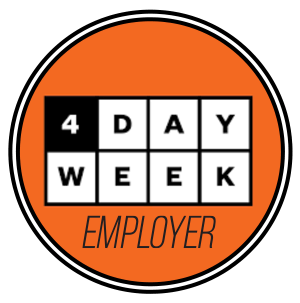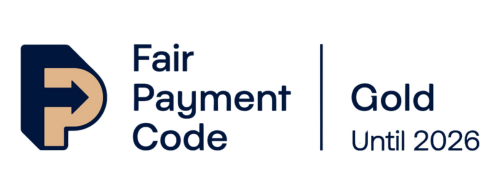Are you looking to connect with Danish-speaking audiences and expand your organisation’s reach? Atlas Translations offers expert Danish translation services tailored to meet your needs. Our team of skilled linguists are here to help you make a lasting impact and communicate effectively with a wider audience through the Danish language and across cultures. Learning Danish is difficult but not impossible, so when it comes to business or personal legal matters, the need for an experienced linguistics team is critical.
Speak (Sort Of) With Your Nordic Neighbours!
The close linguistic bond between Scandinavian languages means that speakers of these languages can often understand each other to a limited extent. Imagine a Dane, a Swede, and a Norwegian sitting down for a chat. The conversation might be filled with clarification and some rephrasing, but basic communication is definitely possible!
Three Extra Letters? No Problem!
Crack open a Danish book, and you’ll see something unfamiliar—three extra letters nestled amongst the familiar A to Z. These aren’t fancy symbols; they’re the heart and soul of many Danish words: Æ, Ø, and Å. Pronounced roughly like the “a” in “care”, the “eu” in “feud”, and the “aw” in “saw”, respectively, these vowels add a unique twist to the Danish language across cultures.
A Land Flowing with Vowels!
Speaking of vowels, the Danish language is positively overflowing with them. Compared to English’s 5 vowels, Danish boasts a cool 9 of them. But don’t be fooled by a simple number—mastering their pronunciation can be a challenge! The “ø” in “sø” (lake) sounds completely different from the “ø” in “gøg” (cuckoo).
Why Is Danish Translation Useful for Businesses?
With over 5 million native Danish speakers and 10 million second-language speakers worldwide, translating into Danish can help you tap into a lucrative European market.
Denmark’s rich culture, history of innovation, and liberal values make it an attractive market for businesses looking to expand. Professional translation into Danish can open doors to new opportunities and help you connect with your target market on their terms.
Polite and Efficient: Cornerstones of the Danish Language
They may be a people of fewer words, but the Danish language across cultures doesn’t mean that the Danes skimp on being polite just because they’re frugal with how much they speak.
Please Don’t Mind the Missing “Please”
One of the most surprising things about Danish is the lack of a direct translation for the English word “please”. Does this mean the Danes are a rude bunch? Absolutely not! Politeness in Danish is conveyed differently. Instead of “Please pass the salt”, a Dane might say “Kan du give mig saltet?” which translates literally to “Can you give me the salt?” The context and, most importantly, tone make it clear that a request, not a demand, is being made.
Thanks! Thank you! Many Thanks!
Maybe to make up for the missing “Please,” the Danes say “Tak” at just about every opportunity. A simple word, “Tak”, is “Thanks” in Danish and is tacked onto the end of nearly every sentence. You can also have “Mange Tak” or “Many Thanks”, and there’s my personal fave, “Tusind Tak” or “A thousand thanks.”
As a native English speaker, you would think of the salt request above as “Please, can you pass me the salt?” But in Danish, it just gets adjusted to “Can you pass me the salt? Thanks!” You can also wait until the salt has been passed and then say, “Tak!”
Why Choose Atlas Translations for My Danish Translation?
At Atlas Translations, we focus on quality, accuracy, and customer satisfaction in every project we undertake. Our dedicated project managers work closely with our skilled linguists to deliver stand-out translations into the Danish language across cultures.
We’ve earned a strong reputation as a trusted translation agency, with over thirty years of experience in the industry. From international sporting events to local community outreach, we’ve helped businesses and individuals achieve their goals across the globe.
Don’t just take our word for it, though – have a peek at our testimonials page to see what our clients are saying about us for yourself.
Learning Danish As an English Speaker 😲
While Danish and English are both Germanic languages, many surprises lurk beneath the surface. The word “mælk” (milk) might look and sound familiar, but “ost” (cheese) throws a curveball. However, some cognates, words with a common ancestor, will make you sigh with relief. The Danish word for “house” is “hus”, sounding remarkably similar to its English counterpart. “Cat” in Danish is simply “Kat”, and “Mouse” in Danish is something you’ve seen before, “Mus.”
A Language in Motion: Borrowing and Beyond
Languages are living things, and Danish is no exception. Have you ever listened to someone natively speaking Danish and all of a sudden heard a recognisable English word? You quickly realise that not every word in the English language has a literal translation in other languages. Some words have taken a while to move into other languages, and some haven’t yet done so. There’s even a movement to create Danish alternatives for so-called borrowed words, showing a fascinating interplay between the Danish language across cultures through tradition and adaptation.
Some Fast Facts:
- The familiar Danish flag (red with an off-centred white cross) is named the “Dannebrog,” meaning “Danish cloth.” The Dannebrog flies on nearly every occasion, especially birthdays, and holds the record for the oldest continuously used national flag since 1219.
- Have you noticed how the Danish royal family only use the names “Christian” and “Frederick” for their monarch? It’s because it’s a tradition! The names are used repetitively as each King (or Queen) accedes the throne. In the case of Queen Margrethe II, the decision was made that she would assume the instance of Christian. Her firstborn son would have the name Frederick, and so we have the current King Frederick X.
- Danish isn’t just spoken in Denmark. Greenland is an autonomous territory within the Kingdom of Denmark, where roughly 10% of the population speaks Danish as a second language. However, it’s important to note that the primary language of Greenland is Kalaallisut, an ancient Inuit language.
- Denmark is a cycling haven! The first bike lane was established in 1892 in Copenhagen. Today, there are 385 kilometres (239 miles) in the city, and the network of national cycle routes spans 4,770 kilometres (2,963 miles) across all of Denmark.
- Calling all Lego fans! This iconic building block was born in Denmark in 1932. The name “Lego” is derived from the Danish phrase “leg godt”, which means “play well”. The city of Billund in Denmark is home to Legoland, a theme park dedicated to all things Lego!
- The Danish pastry is not Danish! It was created in France in 1622 and then taken to Italy and Austria. It only arrived in Denmark in 1840, after a strike of Danish bakers forced bakeries to hire Viennese replacements who started producing the pastry. This is why the Danish call it wienerbrød or Vienna Bread.
Contact Us
Do you need a Danish translation? Are you interested in bridging the gap between the Danish language and across cultures? We’d love for you to contact Atlas Translations. Contact us for a chat or to ask questions!
Call us on 01727 812 725 or email us at team@atlas-translations.co.uk to let us know what you need. We respond quickly to all enquiries!
If you’d like to meet us face to face, learn more about our translation and language services, or deliver documents, please email or call us to arrange a meeting.
Use the Live Chat option during UK working hours to ask us any questions. You’ll chat with a real, live human—no bots here! Just click the little icon at the bottom right of your screen to start chatting with us.
If you need a quick quote, we have a handy Get a Quote button located at the top of our website where you can get an estimate for your needs.
Can I Trust Atlas Translations?
Of course, you can! Should you need some additional information, read on:
Atlas Translations holds two ISO certifications — ISO 9001:2015 (Quality Management) and ISO 17100:2017 (Translation Services).
If the project is highly confidential, we can sign a non-disclosure agreement (NDA) for your protection.
Are we up to date on privacy? Data protection has always been important, and we have been registered with the Information Commissioner’s Office (ICO) for over 20 years.
You can read more about our commitment to quality here.
Atlas Translations prides itself on providing fast, friendly, and high-quality language services. But don’t just take our word for it—see what our clients are saying about us.
We’re also on TrustPilot, and you can read our reviews here.
Global Voice, Local Touch
If you’re looking for some top tips for partnering with Atlas Translations, we have some top tips to share! We answer 25 of our clients’ most frequently asked questions, ranging from typesetting queries to discussing reference materials.















